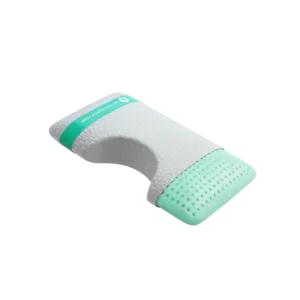Everything You Need to Know About Luteal Phase Symptoms
Understanding Luteal Phase Symptoms
Navigating the complexities of the luteal phase can make a significant impact on your daily life. During this period, many individuals encounter a range of symptoms that can affect emotional and physical well-being. Here, we explore the key symptoms that commonly arise during the luteal phase:
– Mood Swings
– Fatigue
– Bloating
– Breast Tenderness
– Headaches
– Skin Breakouts
– Appetite Changes
The luteal phase commences immediately after ovulation—the time when an ovary releases an egg—and continues until menstrual bleeding begins. This phase is marked by changes in levels of key hormones, primarily progesterone, which prepares the body for a potential pregnancy. Understanding these luteal phase symptoms is essential not only for monitoring your health but also if you are considering starting a family.
What is the Luteal Phase?
The luteal phase is the second segment of your menstrual cycle, extending from ovulation to the onset of your next period. It typically lasts about 12 to 14 days and plays a pivotal role in preparing the body for potential pregnancy. Here’s how it fits within the broader context of the menstrual cycle:
1. Menstrual Phase: This phase begins on day one of your period, with low levels of estrogen and progesterone.
2. Follicular Phase: Following menstruation, the follicular phase begins, with estrogen levels gradually rising as the body prepares to release an egg.
3. Ovulation: Around the mid-point of the cycle, ovulation occurs, with a surge in luteinizing hormone (LH) triggering the release of an egg.
4. Luteal Phase: Beginning right after ovulation, this phase is dominated by progesterone from the corpus luteum, which forms from the remains of the follicle.
Hormonal Impact During the Luteal Phase
Understanding the hormonal shifts during the luteal phase can shed light on the symptoms you may experience. Progesterone’s rise is crucial for:
– Thickening the Uterine Lining: Essential for successful embryo implantation.
– Supporting Embryo Growth: Facilitates the early developmental processes of a fertilized egg.
– Increasing Body Temperature: A slight rise in body temperature creates a conducive environment for potential pregnancy.
Estrogen, although less dominant, also plays a vital supporting role during this phase. Recognizing these hormonal influences can empower you to better manage luteal phase symptoms like mood swings, fatigue, and breast tenderness.
Key Luteal Phase Symptoms
During this phase, both physical and emotional symptoms can surface. Here’s a closer look at what you might encounter:
Physical Symptoms
– Sore Breasts: Tenderness and swelling due to elevated hormone levels can make your breasts feel sensitive.
– Bloating: Hormonal fluctuations may lead to water retention, resulting in an uncomfortable, swollen feeling.
– Digestive Changes: Some may experience constipation, while others might have diarrhea due to hormonal effects on gut motility.
– Headaches: A common complaint linked to hormonal changes, particularly a drop in estrogen.
– Fatigue: Many report feeling unusually tired as progesterone exerts a sedative effect.
– Skin Changes: Increased oil production may lead to breakouts before your period.
– Appetite Variations: Cravings or changes in appetite can prompt you to reach for comfort foods.
Emotional Symptoms
– Mood Fluctuations: Emotional ups and downs are prevalent, often influenced by hormonal changes.
– Irritability: Small annoyances may trigger greater frustration during this time.
– Sleep Disturbances: Sleep patterns may shift, leading to either insomnia or excessive sleep.
– Social Withdrawal: The combination of physical and emotional symptoms can contribute to a reluctance to engage in social events.
Recognizing these luteal phase symptoms enables better preparation and management of your daily activities.
Identifying the Luteal Phase
Tracking your luteal phase can provide valuable insights into your body’s rhythm and hormonal fluctuations. Here are two effective methods for identification:
Basal Body Temperature (BBT)
Measuring your BBT can reveal fluctuations tied to ovulation and the luteal phase:
– Use a Basal Body Thermometer: These specialized thermometers accurately measure tiny temperature changes.
– Daily Tracking: Record your temperature every morning at the same time for reliable insights. A rise in BBT, typically by 0.4 degrees Fahrenheit, indicates ovulation and signifies the start of your luteal phase.
Cervical Mucus Changes
Cervical mucus serves as another indicator of the luteal phase:
– Pre-Ovulation: The mucus is clear and stretchy, resembling egg whites, facilitating sperm movement.
– Post-Ovulation: In the luteal phase, the mucus becomes thick and opaque due to increased progesterone, offering a protective barrier.
By monitoring temperature and mucus changes, you can gain a better understanding of your cycle, helping to manage symptoms more effectively.
Managing Luteal Phase Symptoms
Implementing strategies to alleviate luteal phase symptoms can significantly enhance daily well-being. Consider the following approaches:
Exercise
Regular physical activity plays a fundamental role in symptom management:
– Yoga: Gentle yoga poses can relieve cramps and reduce stress.
– Walking: A brisk daily walk can invigorate your mood and lessen fatigue.
– Diverse Activities: Choose a form of exercise you enjoy—whether it’s swimming, cycling, or dancing—to help alleviate muscle pain and headaches.
Nutrition
Nutrition affects how you feel during the luteal phase:
– Complex Carbohydrates: Foods like whole grains, fruits, and veggies stabilize blood sugar and elevate serotonin levels.
– Calcium and Magnesium: Incorporate dairy and leafy greens to combat mood swings and bloating.
– Limit Stimulants: Reducing caffeine and alcohol can improve sleep quality and stabilize mood.
Stress Management Techniques
Managing stress effectively can mitigate emotional symptoms:
– Deep Breathing Exercises: Practicing deep breathing can decrease anxiety and promote relaxation.
– Meditation: Dedicating time daily for meditation enhances emotional equilibrium.
– Progressive Muscle Relaxation: This technique involves systematic relaxation of different muscle groups to alleviate overall tension.
Sleep Hygiene
Prioritizing high-quality sleep is key:
– Regular Sleep Schedule: Aim for 7-8 hours of rest and try to maintain a consistent sleep pattern.
– Optimal Environment: Keep your sleeping area cool, dark, and free from screens to encourage restful sleep.
Additional Considerations
In some instances, extra therapies may provide relief from luteal phase symptoms:
– Acupuncture: This alternative treatment can balance hormones and alleviate discomfort.
– Supplements: Discuss options with your healthcare provider, such as vitamin B6 or magnesium.
– Over-the-Counter Relief: Non-steroidal anti-inflammatory drugs (NSAIDs) can help manage pain and cramps effectively.
Conclusion
Understanding and navigating luteal phase symptoms can empower you to take charge of your menstrual health. By incorporating strategic lifestyle changes—be it through exercise, diet, stress management, or sleep hygiene—you can cultivate a more comfortable experience during this phase. If you ever face severe symptoms or have lingering questions about your luteal phase, connecting with a healthcare provider can offer tailored insights and solutions.
Managing your luteal phase symptoms effectively prepares you not only to feel your best but also equips you to understand your body’s signals better, leading to a healthier menstrual cycle overall.



















